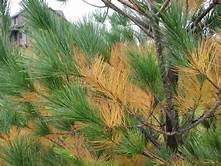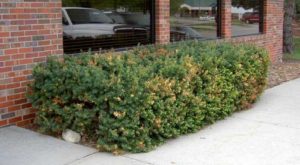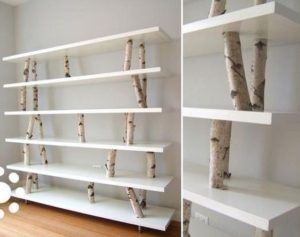There are several cedar-rust diseases that spend part of their life cycle on Eastern red cedar and other junipers, and another part of their life cycle on apple, hawthorn, and other members of the rose family. Both hosts are required for the fungus to complete its life cycle.
DISEASE CYCLE
The rust organism spends one full year of its life cycle on junipers. During the second spring, usually around the time crabapples are in bloom, the galls become rain soaked and swell, producing jelly-like tendrils (spore horns) that project out of the galls. As the spore horns begin to dry, the spores are released and carried by the wind to young, newly developing leaves of apples and other susceptible plants. Dispersal of spores can range up to 5 miles from a juniper but most infections develop within several hundred feet. About a month after crabapples have bloomed, the spores are exhausted and most leaves are no longer susceptible. Ten-to-14-days from initial infection, small yellow spots can be seen on upper surfaces of infected leaves. Several weeks later, the fungus appears as orange or brown spots with hairlike appendages on the underside of the leaf. In late summer, the rust spots release the spores and are carried to nearby junipers.
Orange jelly galls on Junipers
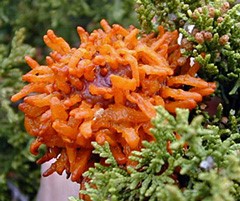
Rust spots on apple leaves
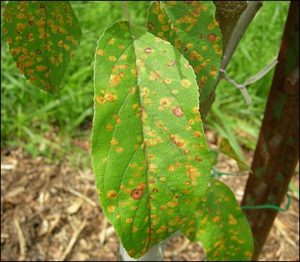
Cedar-apple rust is the most common of the three fungal rust diseases and attacks susceptible cultivars of apples and crabapples. It infects the leaves, fruit, and, occasionally, young twigs. The alternate host plant, Eastern red cedar (Juniperus virginiana), is necessary for the survival of the fungus. Spores produced on rose family plants only infect juniper plants, and those originating on the evergreen host only infect rose family plants. Repeated infections of cedar-apple rust can be unsightly and seriously weaken and destroy the ornamental value and health of susceptible plants.
DISEASE MANAGEMENT
Cultural Control
Because this disease requires two hosts, the separation of the hosts for a distance of one mile will help reduce infection. Ideally, to minimize disease host availability, plant trees and shrubs that are resistant to rust diseases. There are many apples, crabapples, hawthorns, and junipers that exhibit resistance to these diseases.
Chemical Control
Protective fungicides can be applied to help minimize infection. A minimum of three applications should be done. These applications protect the new leaves from spores that are dispersed from the juniper host in mid-spring. Spraying apple and crabapple foliage after symptoms develop has no controlling effect.
Apples and Crabapples: Begin spraying when new growth appears and flower buds show color but are not yet open. Repeat three to four times at 10 to 14 day intervals.

